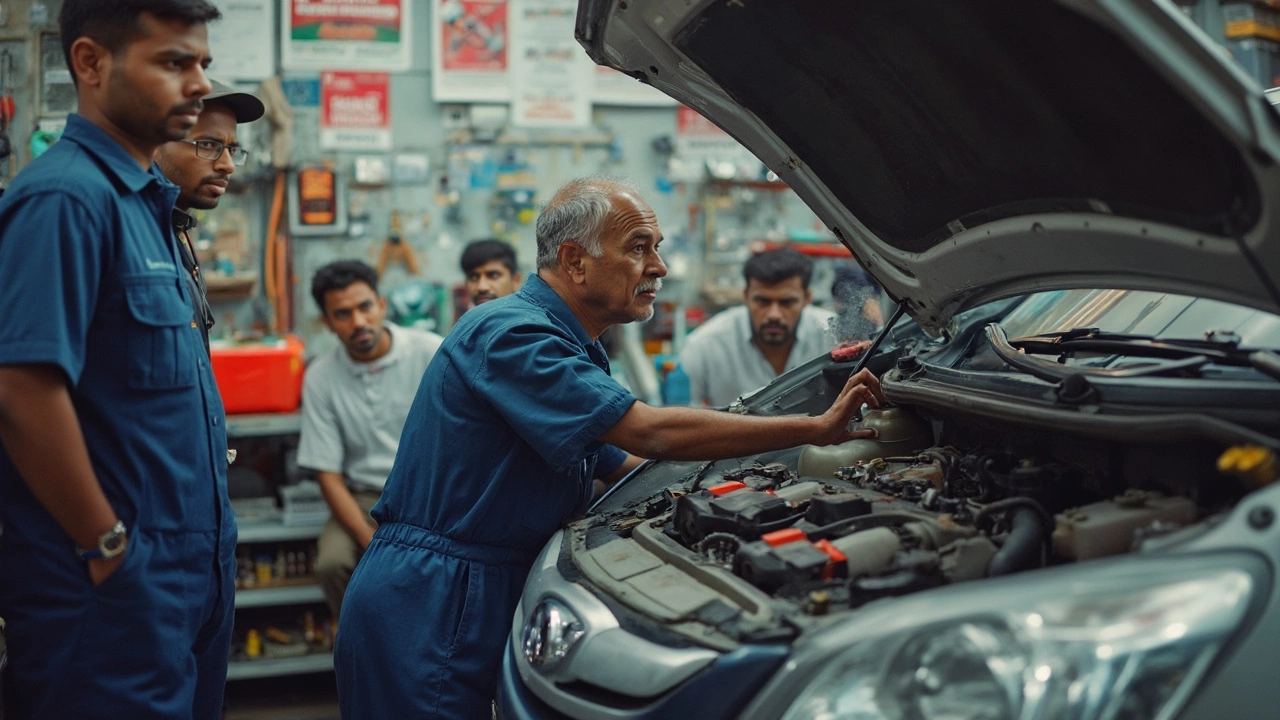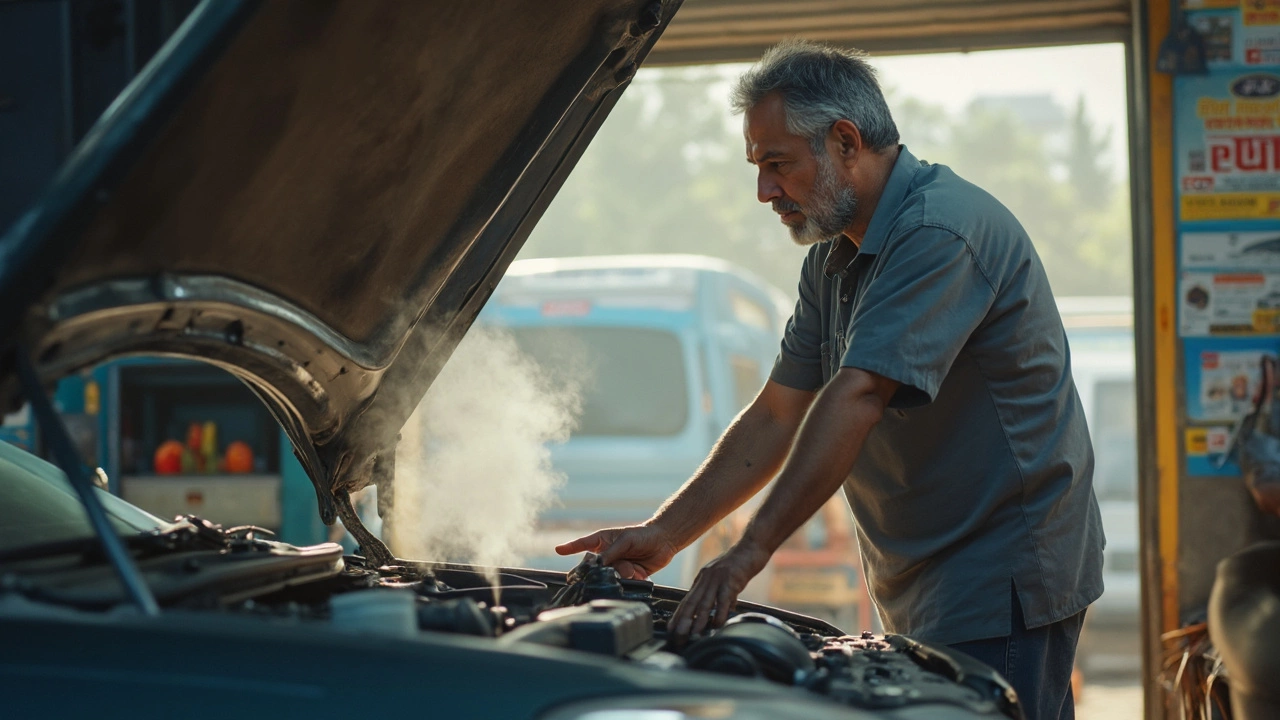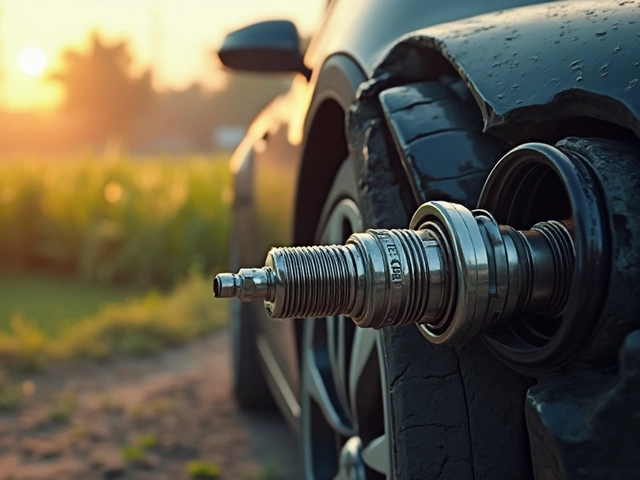
Overheating: What Causes It and How to Stop It Before It Costs You
When your car starts overheating, a condition where the engine temperature rises beyond safe limits, often due to cooling system failure. Also known as engine overheating, it doesn’t just mean a warning light—it means your engine is running on borrowed time. Most people ignore the first signs until smoke appears. That’s too late. Overheating isn’t random. It’s usually caused by one of three things: a radiator failure, when the radiator can’t transfer heat away from the engine, often due to clogs, leaks, or damaged fins, a coolant leak, a loss of fluid that keeps the engine at the right temperature, commonly from hoses, water pumps, or the radiator cap, or a broken car cooling system, the full network of parts—including thermostat, fan, and belts—that work together to regulate engine heat.
Think of your engine like a stove. If you turn up the heat but block the vents, it’s going to burn out. Same with your car. A bad thermostat stuck closed? The coolant can’t flow. A worn water pump? The fluid stops moving. A cracked hose? Coolant drips out slowly until there’s none left. You don’t need a mechanic to spot these early. Check under the hood for puddles, smell for sweet burnt fluid, or listen for the fan not kicking on after the engine warms up. These aren’t guesses—they’re facts. A 2023 study by the Automobile Association found that 68% of overheating cases were caused by simple, preventable issues like low coolant or a loose cap. Not a blown head gasket. Not a $3,000 engine rebuild. Just a $15 part and 10 minutes of your time.
What you’ll find below are real stories from drivers who ignored the signs—and those who caught them early. You’ll see how a dirty air filter can indirectly cause overheating by forcing the engine to work harder. You’ll learn why replacing a radiator isn’t always the answer, and why some electric cars still need them. You’ll get clear, no-fluff advice on what to check first, what to ignore, and when to walk away from a DIY fix. This isn’t theory. It’s what actually happens on the road, in Indian heat, with worn-out hoses and dusty radiators. No jargon. No upsells. Just what you need to know before your car sits on the side of the highway.
-
30 Jun

-
23 Jun

Car Radiators: Is Replacing Your Old Radiator Worth It?
Thinking about replacing your car’s radiator? This article breaks down when it’s worth swapping out your old radiator and when you might be better off with a repair. Learn what signs mean it’s time for a new one, what problems a failing radiator can cause, and get real-life tips for making the right call. We bust some common myths and give you a peek at what happens if you ignore radiator issues too long. Get ready for some straightforward answers and practical advice. -
8 Jun

What Sound Does a Bad Radiator Make? Spot the Clues Early
Curious if your car's radiator is in trouble? This guide breaks down the tell-tale sounds a bad radiator makes and what they could mean for your ride. You'll find out what signs to watch (and listen) for, why they matter, and when it's time to take action. Learn how to spot radiator trouble before it leads to a breakdown. Save yourself the hassle (and cash) by staying ahead of radiator problems. -
29 Apr

Can I Drive My Car With a Bad Radiator? Real Risks and Quick Fixes
Driving with a bad radiator is asking for trouble, but lots of folks wonder if they can just power through. This article breaks down exactly what happens if you ignore radiator problems and keep driving. You'll get practical tips on spotting trouble early, what to do if you're stuck, and how to avoid a blown engine. Real-life examples bring the risks home. You’ll end up knowing if it’s ever worth gambling with a bad radiator—or when to just stop and call for help.





